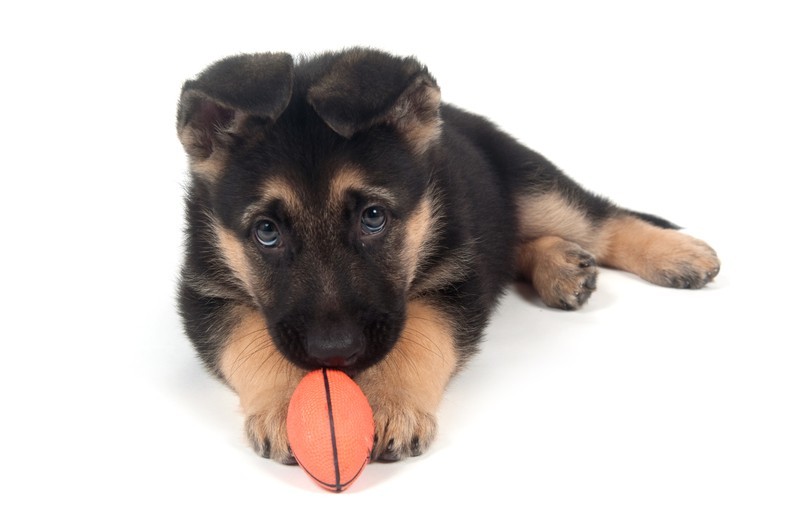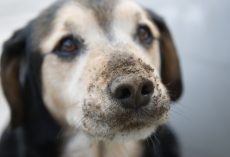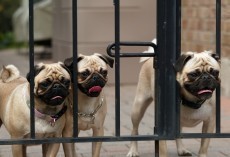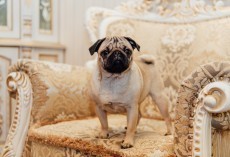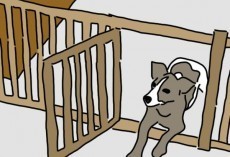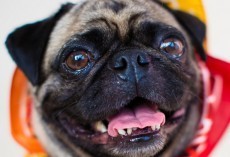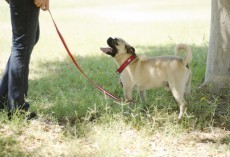The following will give you a better understanding of separation anxiety in your dog. It will go over some of the causes, symptoms, how to treat it and what not to do.
Common Symptoms of Separation Anxiety
The following is a list of symptoms that may indicate separation anxiety:
Urinating and Defecating:
Some dogs urinate or defecate when left alone or separated from their guardians. If a dog urinates or defecates in the presence of his guardian, his house soiling probably isn’t caused by separation anxiety.
Barking and Howling:
A dog who has separation anxiety might bark or howl when left alone or when separated from his guardian. This kind of barking or howling is persistent and doesn’t seem to be triggered by anything except being left alone.
Chewing, Digging and Destruction:
Some dogs with separation anxiety chew on objects, door frames or window sills, dig at doors and doorways, or destroy household objects when left alone or separated from their guardians. These behaviors can result in self-injury, such as broken teeth, cut and scraped paws and damaged nails. If a dog’s chewing, digging and destruction are caused by separation anxiety, they don’t usually occur in his guardian’s presence.
Escaping:
A dog with separation anxiety might try to escape from an area where he’s confined when he’s left alone or separated from his guardian. The dog might attempt to dig and chew through doors or windows, which could result in self-injury, such as broken teeth, cut and scraped front paws and damaged nails. If the dog’s escape behavior is caused by separation anxiety, it doesn’t occur when his guardian is present.
Pacing:
Some dogs walk or trot along a specific path in a fixed pattern when left alone or separated from their guardians. Some pacing dogs move around in circular patterns, while others walk back and forth in straight lines. If a dog’s pacing behavior is caused by separation anxiety, it usually doesn’t occur when his guardian is present.
Coprophagia:
When left alone or separated from their guardians, some dogs defecate and then consume all or some of their excrement. If a dog eats excrement because of separation anxiety, he probably doesn’t perform that behavior in the presence of his gu What to Do If Your Dog Has Separation Anxiety
Treatment for Mild Separation Anxiety:
If your dog has a mild case of separation anxiety, counterconditioning might reduce or resolve the problem. Counterconditioning is a treatment process that changes an animal’s fearful, anxious or aggressive reaction to a pleasant, relaxed one instead. It’s done by associating the sight or presence of a feared or disliked person, animal, place, object or situation with something really good, something the dog loves. Over time, the dog learns that whatever he fears actually predicts good things for him. For dogs with separation anxiety, counterconditioning focuses on developing an association between being alone and good things, like delicious food. To develop this kind of association, every time you leave the house, you can offer your dog a puzzle toy stuffed with food that will take him at least 20 to 30 minutes to finish. For example, try giving your dog a KONG® stuffed with something really tasty, like low-fat cream cheese, Cheez Whiz® or low-fat peanut butter, frozen banana and cottage cheese, or canned dog food and kibble. A KONG can even be frozen so that getting all the food out takes even more of your dog’s time. (For KONG recipe ideas and more information about how to use food puzzle toys, please see our article, How to Stuff a KONG Toy.) Your dog might also love a Buster® Cube, a Kibble Nibble™ or a TreatStik® filled with kibble. Be sure to remove these special toys as soon as you return home so that your dog only has access to them and the high-value foods inside when he’s by himself. You can feed your dog all of his daily meals in special toys. For example, you can give your dog a KONG or two stuffed with his breakfast and some tasty treats every morning before going to work. Keep in mind, though, that this approach will only work for mild cases of separation anxiety because highly anxious dogs usually won’t eat when their guardians aren’t home.
Treatment for Moderate to Severe Separation Anxiety:
Moderate or severe cases of separation anxiety require a more complex desensitization and counterconditioning program. In these cases, it’s crucial to gradually accustom a dog to being alone by starting with many short separations that do not produce anxiety and then gradually increasing the duration of the separations over many weeks of daily sessions.
What NOT to Do:
Do not scold or punish your dog. Anxious behaviors are not the result of disobedience or spite. They are distress responses! Your dog displays anxious behaviors when left alone because he’s upset and trying to cope with a great deal of stress. If you punish him, he may become even more upset and the problem could get much worse.
Obviously, humans are not the only beings that can become stressed and dysfunctional. No one ever said pet ownership is a breeze but the positives definitely out-weigh the negatives!
For more information on separation anxiety and other issues involving your dog please go to the ASPCA website. There is a mountain of information over there from experts.
Meanwhile, happy pet … happy life!
